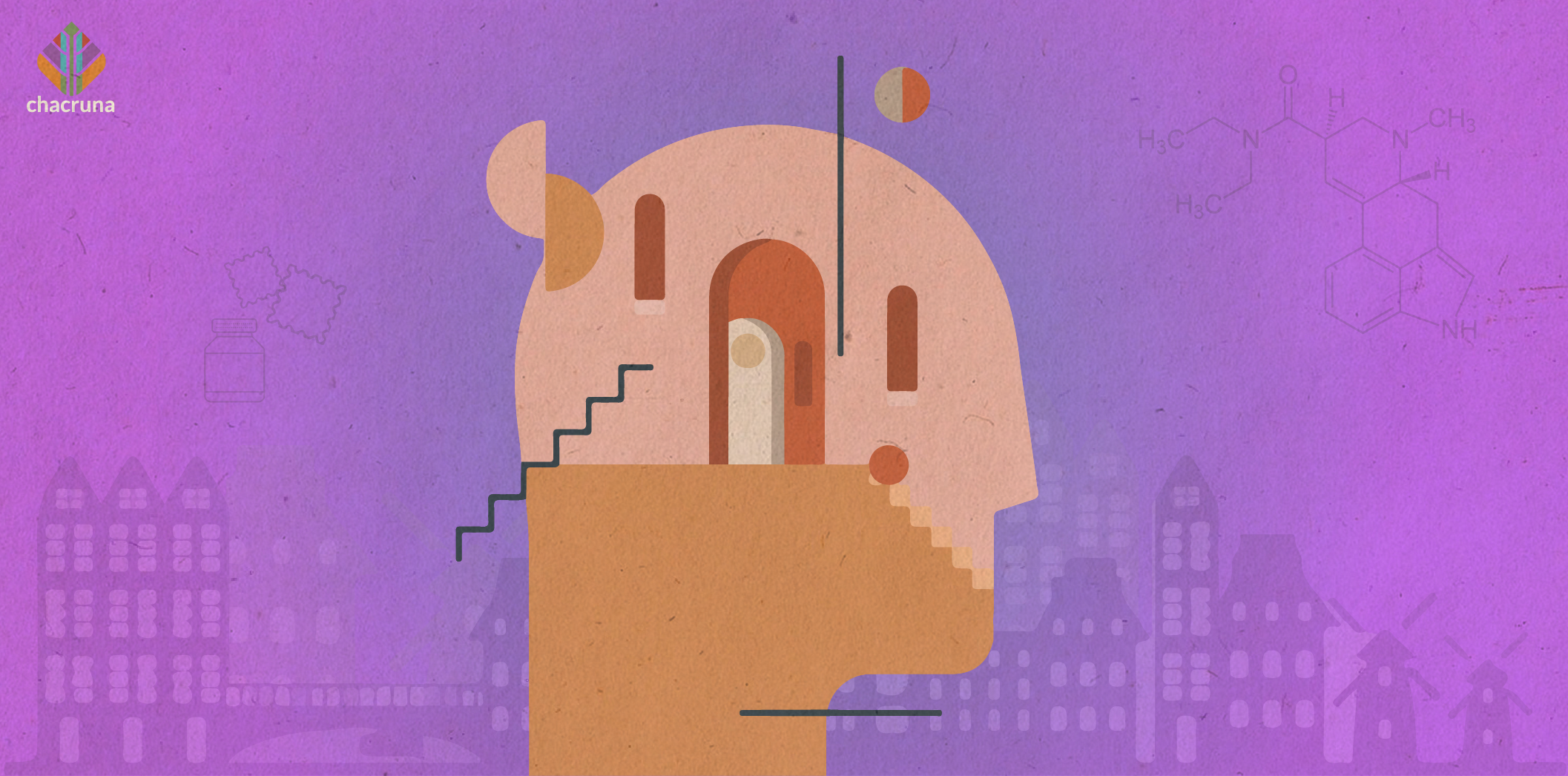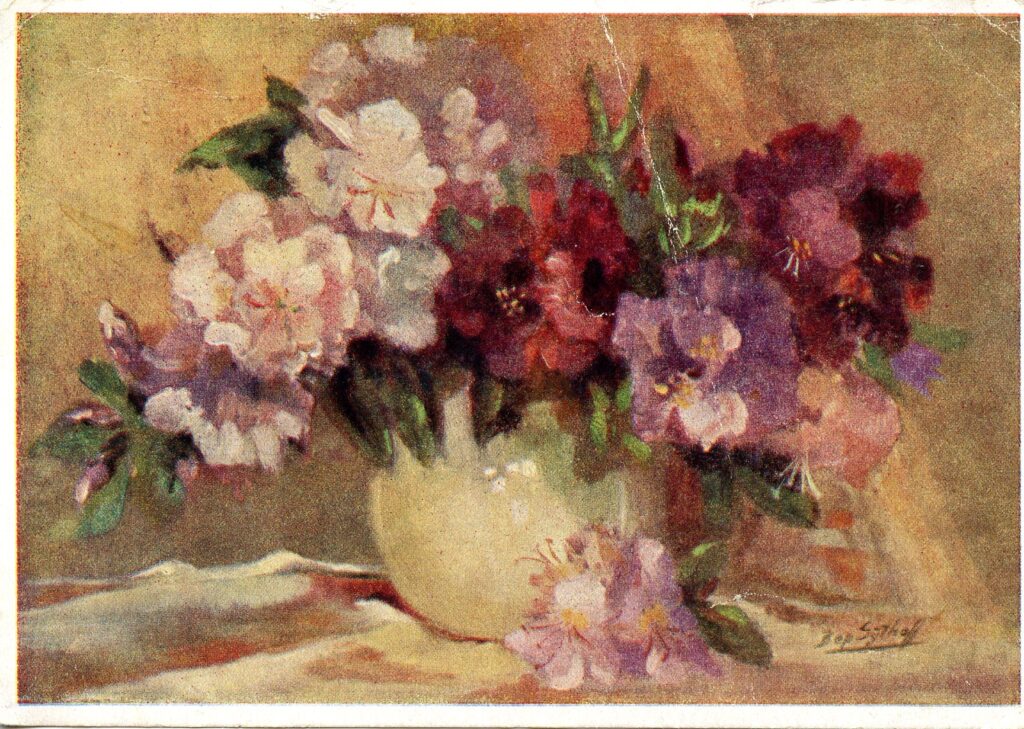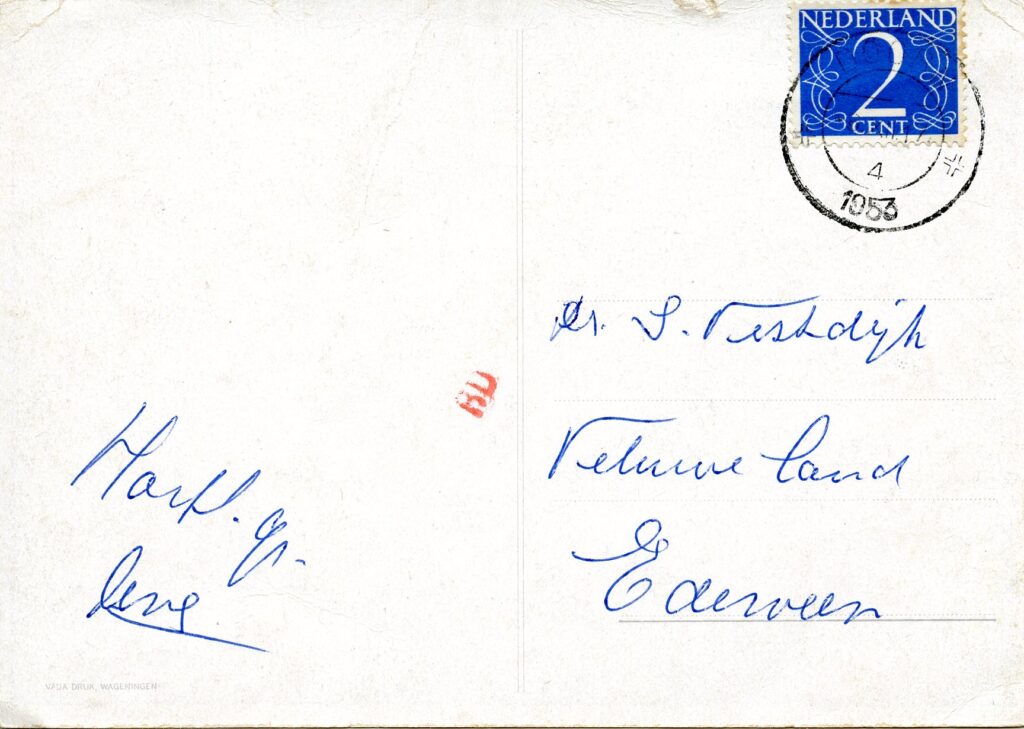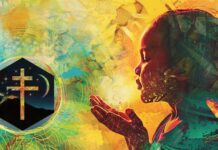- From Psychiatric Clinics to Magical Centre: LSD in the Netherlands - April 3, 2024
- Kin Spruijt: A Psychedelic Nurse in a Dutch Psychiatric Clinic - November 18, 2020

Since at least the 1840s psychiatrists have administered psychedelics to treat their patients. From the 1950s onwards this happened with an increasing appreciation of the influence of set and setting on therapeutic effects, and in the context of the rise of a global psychedelic movement. Historians can uncover a rich literature about these treatments that is mostly buried in medical journals – articles that discuss treatment results and sometimes the experiences of the patients. Most of this literature is written by the male psychiatrists, reflecting western society’s gender inequalities.
Veluweland: A Dutch Psychiatric Clinic
During my research into the history of LSD use in psychiatric settings in the Netherlands, which began in the early 1950s, I discovered that the power dynamic revealed in the reports partly obscured what actually happened during therapeutic LSD-sessions. Important participants in these sessions were simply omitted, although their role was crucial – arguably as crucial as that of the psychiatrists, the patients, and of LSD itself. Nurses, whether male or female, were hardly ever mentioned.
“Nurses, whether male or female, were hardly ever mentioned.”
For instance, in the reports on LSD-therapy at the Dutch psychiatric clinic Veluweland, located in a small community in the province of Gelderland, the main actors are first and foremost psychiatrist Willy Arendsen Hein and his anonymous patients. But it can be argued that the work of the nurses contributed as much to the success of the LSD-therapy as Arendsen Hein himself.
Arendsen Hein founded Veluweland in 1948, a private clinic for “neurotic patients” near the village of Ederveen in the east of the Netherlands. Typical of his time, he was heavily influenced by psychoanalysis, especially Alfred Adler who emphasized the social dimension of psychology. At Veluweland, Arendsen Hein developed a socio-therapeutic approach in which group therapy held central palace. When confronted with “refractory” patients who were resistant to other kinds of therapy, he started to experiment with psychotropic drugs in the 1950s in an attempt to break down their resistance, and ultimately found his ideal substance in LSD. His selection of these patients was based on his intuitive feeling that they would respond well to LSD and his own personal experiences with the drug. Arendsen Hein administered LSD to his patients in order to develop what he called an “existential relationship” between therapist and patient.
This relationship very much accorded with his own character. Arendsen Hein was a charismatic and very authoritarian person. Before he started to take LSD himself he would only greet the head-nurse and not the lower ranked staff members. His own experiences with LSD made him milder and more attentive to others. In fostering an existential relationship with his patients, Arendsen Hein charismatically portrayed himself as a “father-figure.” In doing so, he sought to strengthen what he called the “weak ego structure” of his patient, based on his interpretation of Adler’s concept of the inferiority complex.
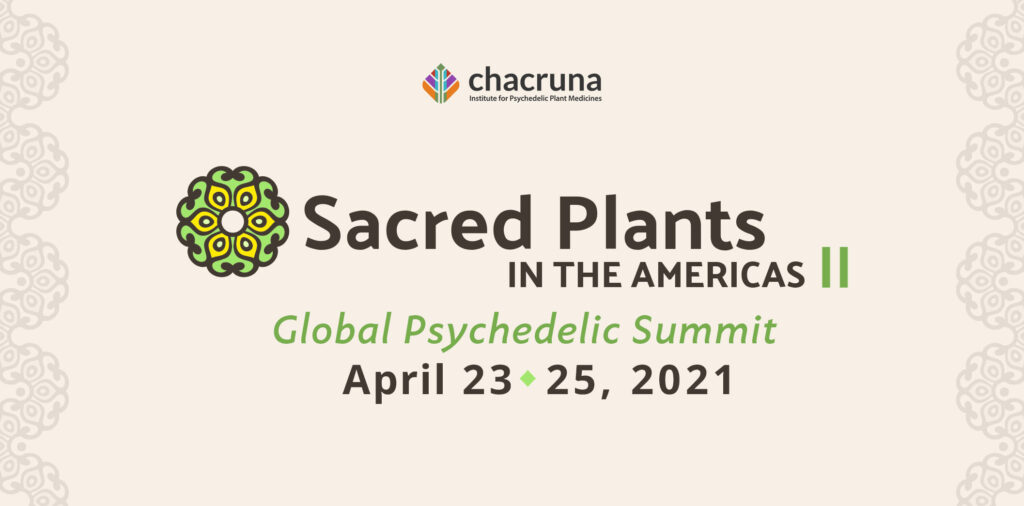
Join us at Sacred Plants in the Americas II
Kin Spruijt
However, despite Arendsen Hein’s stern paternalism at the Dutch psychiatric clinic, the role of the father was very much supplemented by the role of the mother, as exemplified by the work of Kin Spruijt. Spruijt worked as a psychiatric nurse in the Veluweland clinic from 1959 to 1974. I was lucky enough to interview her in February 1996 at her home in the city of Ermelo, close to the clinic, the year before her death. I remember her looking like a real matron, although no longer in the best of health, and sitting in a room dominated by a large psychedelic painting.
Kin Spruijt was a motherly figure very much involved in the early period of LSD therapy in the Netherlands. Tina Fransen, a female patient, published (in Dutch) a book on her experiences in Veluweland. She describes how she was given an LSD treatment on her birthday, in which Spruijt was the attending nurse. Both nurse and psychiatrist welcomed her “as if it was a party” (which it was, of course). Arendsen Hein required everyone who worked in Veluweland, including Spruijt, to experience LSD at least once.
The experiences in one of her own LSD sessions was the inspiration for a painting that Spruijt made and that still hung in her living room when I interviewed her. She painted herself as an Egyptian goddess (or rather, as part of an Egyptian goddess), in a landscape warmed by the rays of the sun. Colored soap bubbles were playfully arranged around her. She told me the bubbles represented all that was good and beautiful in life, such as art and music, and the idea that experiences happen to us when we are ready to receive them. Behind the goddess, were her patients, to whom she was very carefully attempting to pass the bubbles, but who were shrinking back. It was painted in bright psychedelic colors: much yellow and some purple. Only the patients were painted in black, shriveled and scorched by their neurotic complexes.
“Experiences happen to us when we are ready to receive them.”
Spruijt shared with me her own memories of the LSD sessions with patients. She told how one of her patients at the Veluweland found herself in a tower of a castle, looking down at a party on the square in front of the castle, separated by a lifted drawbridge. The patient, who had autism and struggled with alcoholism, asked, “How do I get to these people?” To which Spruijt answered: “What would you have to do to reach them?” The patient: “I could let the drawbridge down and walk over the bridge to these people.” Spruijt: “That is a possibility, try it.” According to the nurse, no further interpretations were needed for the patient.
Gendered Roles at Veluweland
Although psychedelics bring us into territories of the mind across and beyond all boundaries, back on earth the social and cultural context of psychedelics use very much reflects the dominant structures of society. In these early therapeutic sessions, LSD was also framed by these dominant structures. Many users of LSD, especially with vulnerable personalities such as psychiatric patients, experienced a weakening of their defenses that psychiatrists and others sometimes described as “infantilization,” or an alleged regression of the patient to a child-like state.
“Although psychedelics bring us into territories of the mind across and beyond all boundaries, back on earth the social and cultural context of psychedelics use very much reflects the dominant structures of society.”
In this context the social roles of both father and mother become much more important than whatever other theoretical frameworks inform the psychiatrist conducting the session. In the LSD sessions in Veluweland, Arendsen Hein represented patriarchy, he was the authoritative father figure to whom the patient turned for help. But nurses such as Kin Spruijt represented the balancing figure of the mother, literally nursing patients through their re-births, nurturing more positive experiences and minimizing the onset of bad trips. Yin and yang are working together. These early reports therefore fundamentally misrepresent these LSD treatments when they do not detail the yin side, the role of the nurse.
Art by Marialba Quesada.
Take a minute to browse our stock:
Did you enjoy reading this article?
Please support Chacruna's work by donating to us. We are an independent organization and we offer free education and advocacy for psychedelic plant medicines. We are a team of dedicated volunteers!
Can you help Chacruna advance cultural understanding around these substances?


